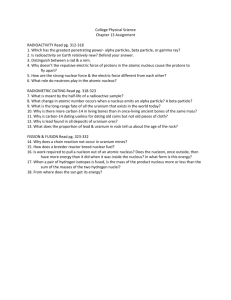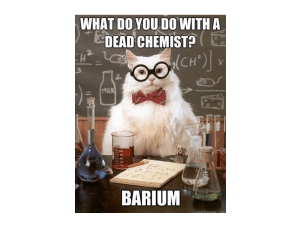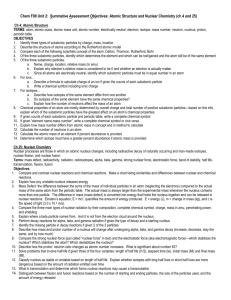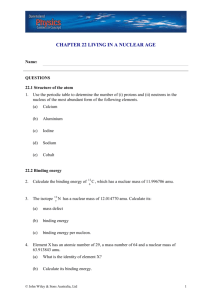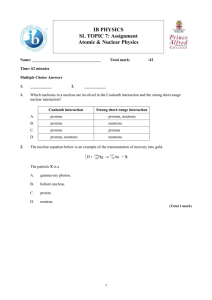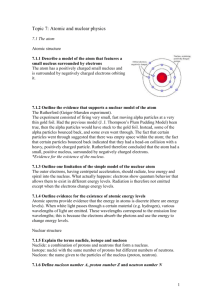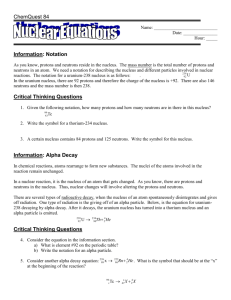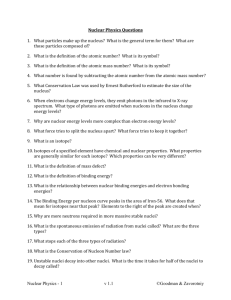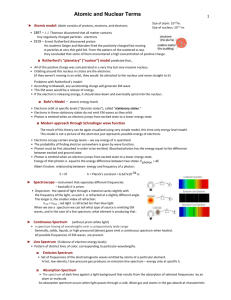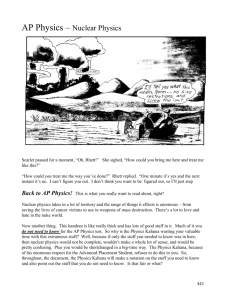Unit 3: Atomic Structure and Nuclear Chemistry
advertisement
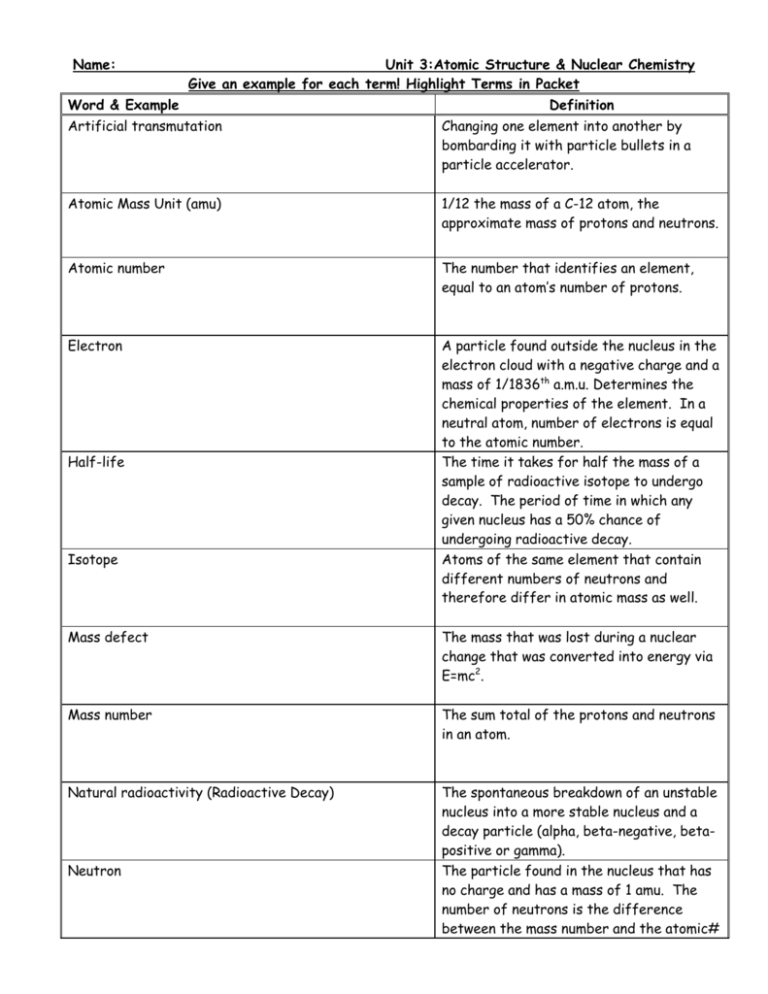
Name: Unit 3:Atomic Structure & Nuclear Chemistry Give an example for each term! Highlight Terms in Packet Word & Example Definition Artificial transmutation Changing one element into another by bombarding it with particle bullets in a particle accelerator. Atomic Mass Unit (amu) 1/12 the mass of a C-12 atom, the approximate mass of protons and neutrons. Atomic number The number that identifies an element, equal to an atom’s number of protons. Electron A particle found outside the nucleus in the electron cloud with a negative charge and a mass of 1/1836th a.m.u. Determines the chemical properties of the element. In a neutral atom, number of electrons is equal to the atomic number. The time it takes for half the mass of a sample of radioactive isotope to undergo decay. The period of time in which any given nucleus has a 50% chance of undergoing radioactive decay. Atoms of the same element that contain different numbers of neutrons and therefore differ in atomic mass as well. Half-life Isotope Mass defect The mass that was lost during a nuclear change that was converted into energy via E=mc2. Mass number The sum total of the protons and neutrons in an atom. Natural radioactivity (Radioactive Decay) The spontaneous breakdown of an unstable nucleus into a more stable nucleus and a decay particle (alpha, beta-negative, betapositive or gamma). The particle found in the nucleus that has no charge and has a mass of 1 amu. The number of neutrons is the difference between the mass number and the atomic# Neutron Nuclear charge The net positive charge of the nucleus, equal to the number of protons in the nucleus. The atomic # with a plus sign. Nuclear fission The process whereby a large nucleus is split by artificial transmutation into smaller nuclei with the release of a large amount of energy derived from the conversion of a tiny bit of mass into energy. Used in nuclear power plants. The process whereby two small nuclei are combined to form one larger nucleus with release of a huge amount of energy derived from the conversion of a tiny bit of mass into energy. Powers our sun. A particle that exists in the nucleus (protons and neutrons.) Nuclear fusion Nucleon Nucleus The central core of the atom, consists of protons and neutrons and has a net positive charge. Particle accelerator A device that uses electromagnetic fields to accelerate charged particles. Proton A particle found in the nucleus that represents a unit charge of +1 and a mass of 1 a.m.u. In a neutral atom, number of protons is equal to the atomic number. Determines the identity of the element. The average mass of a sample of element that is determined by the mass and abundance of every isotope of that element. Weight-Average Mass (Weighted Atomic Mass)


